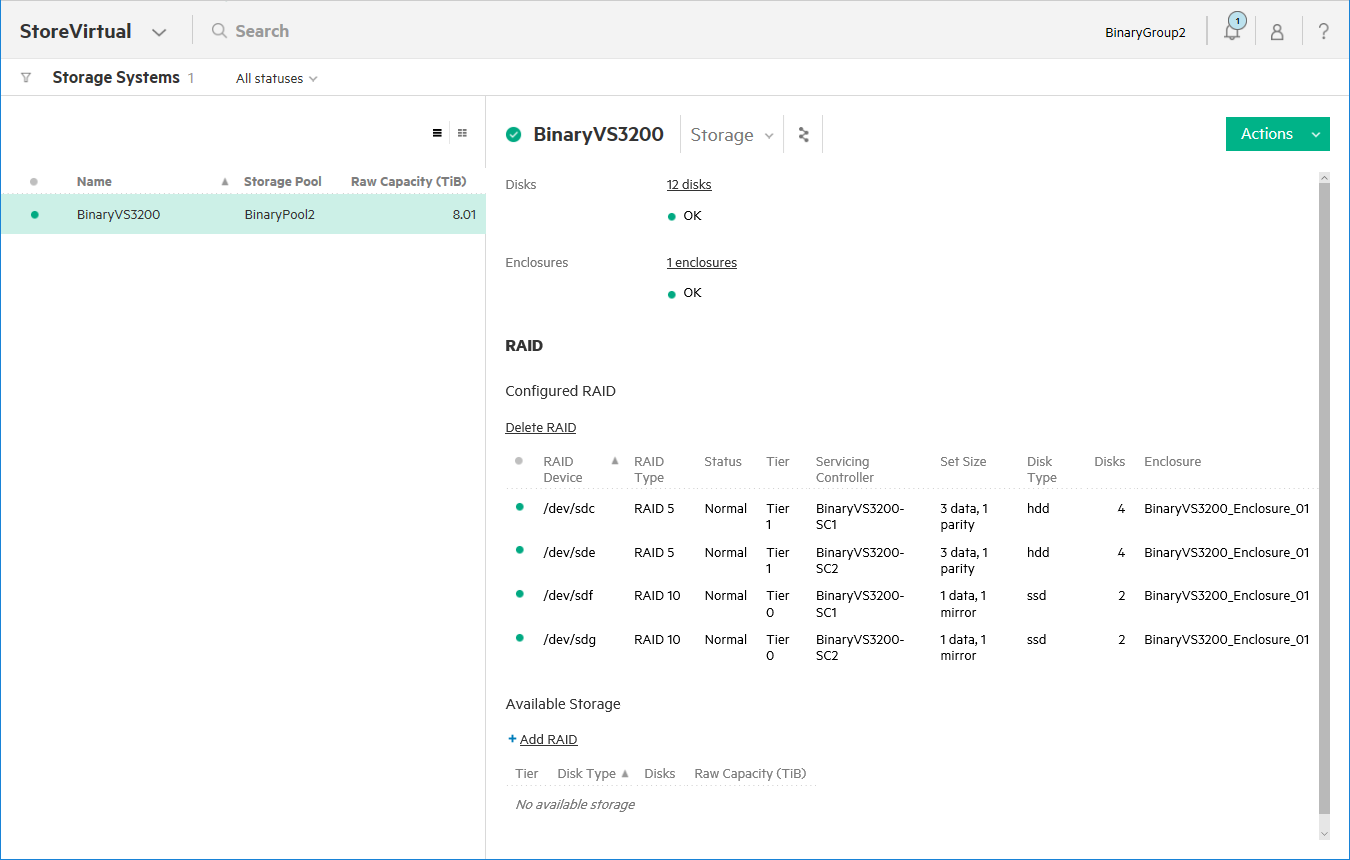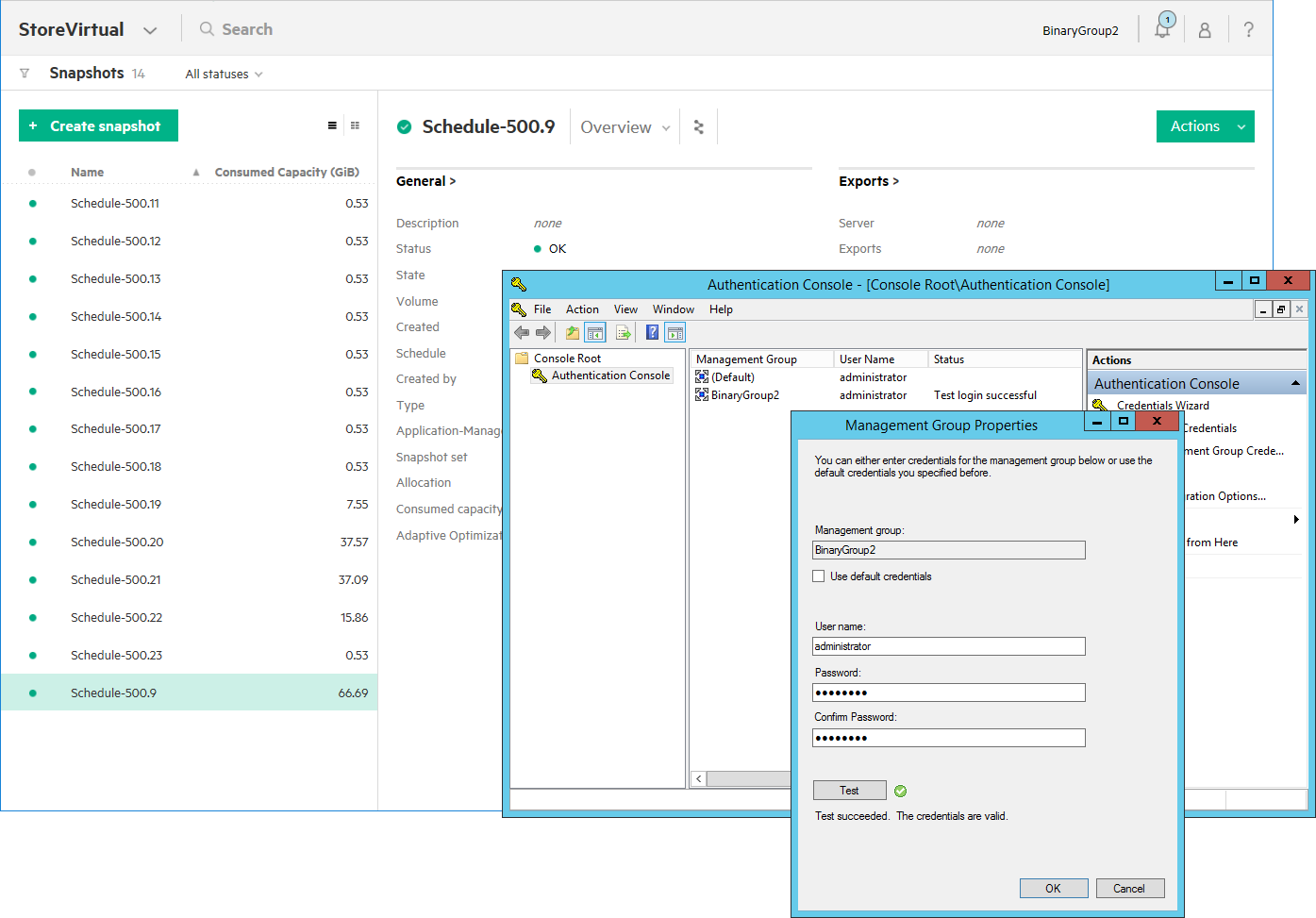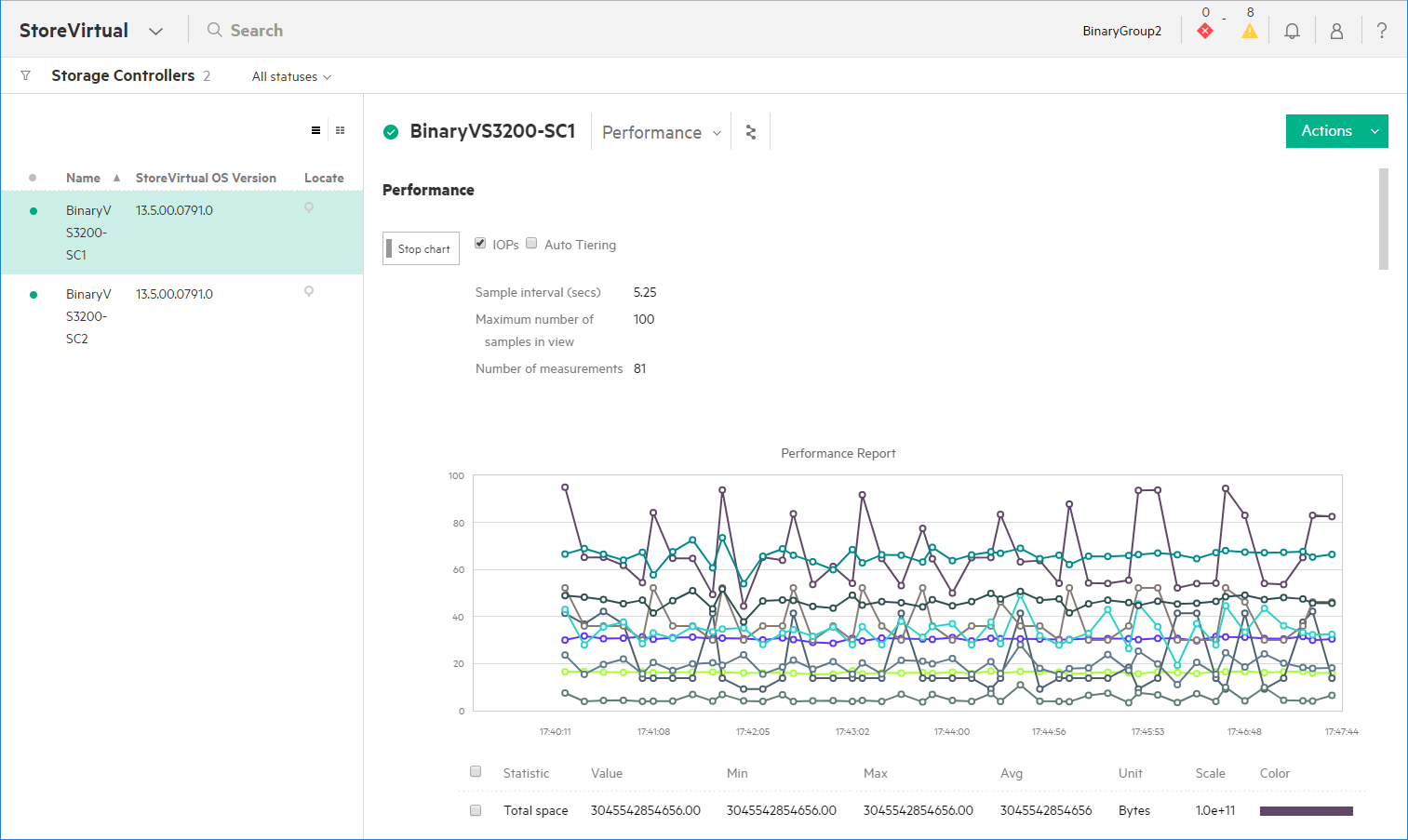HPE StoreVirtual 3200 Storage
Exclusive: HPE makes high availability storage very affordable for SMBs


HPE hits the spot for value making the SV3200 a great choice for SMBs that want a highly available software defined storage solution with plenty of room to grow
-
+
Remarkably good value; Easy wizard driven deployment; Five 9’s availability; Highly scalable
-
-
Not yet supported by OneView

Software-defined storage has traditionally been beyond the means of SMBs but HPE's StoreVirtual 3200 appliances aim to put it well within their budgets. This new family has been built from the ground up to provide an affordable solution with five 9's reliability and looks to have achieved this eminently as our review system has a starting price of around 3,500.
This 2U appliance has dual active/active controllers each powered by a 64-bit, 6-core ARM CPU. These are partnered by 8GB of NVDIMM cache memory with integral battery backup modules.
Along with SAS 3 support, each controller has dual Gigabit iSCSI data ports to which you can add port expansion cards. Our system includes dual 10GbE SFP+ ports per controller with room for a second card alongside.
HPE offers quad Gigabit cards and has recently released a copper 10GBase-T variant. You can also choose dual 8/16Gbps Fibre Channel port cards but these don't support storage scale-out.

The new web console for the SV3200 is nicely designed and easy to use
Scale-up and scale-out
The appliance is available with 12 LFF or 25 SFF SAS 3 hot-swap drive bays. The controllers have SAS 3 expansion ports and a single system supports three additional LFF/SFF disk shelves for a maximum supported scale-up capacity of 288TB.
Sign up today and you will receive a free copy of our Future Focus 2025 report - the leading guidance on AI, cybersecurity and other IT challenges as per 700+ senior executives
For iSCSI models, you can scale-out with a second SV3200 appliance to support up to six disk shelves. HPE offers plenty of storage options as you can choose from 15K and 10K SAS 3 drives plus 7.2K midline drives and add SSDs when the mood takes you.
With SSDs in the mix, you can take advantage of the StoreVirtual Active Optimisation feature which enables transparent auto-tiering across two levels. It automatically moves hot data to the SSD tier in near real-time and requires an Advanced Data Services Suite license which costs around 2,500.
The suite license also activates the asynchronous remote copy and synchronous multi-site stretch replication features. The former replicates thin provisioned snapshots across local and remote systems while the latter mirrors volumes across a multi-site SAN.

The configuration wizard sorted out the physical RAID arrays for our SSDs and hard disks
SVOS and deployment
Each controller runs HPE's StoreVirtual Operating System (SVOS) which provides all storage clustering services and fault tolerance. The 3200 is designed to be deployed in minutes and the new OneView-style web interface presented us with a deployment wizard on first contact.
This handled securing admin access, setting up a data network, creating a management group container, naming the storage pool and assigning virtual IP addresses. We also enabled the passive support option which allows authorised HPE representatives to receive alerts, monitor system health and provide remote support.
Fault tolerance starts at the controller level where their associated drives are placed in hardware RAID arrays with SVOS supporting RAID levels 10, 5 and 6. This is all taken care of by the wizard which chose the best RAID settings based on our collection of SSDs and 15K SAS drives, created four arrays and bonded the 10GbE ports on each controller.

HPE's AASM and Authentication Console are required to take app-aware snapshots on Windows hosts
Network RAID
Network RAID comes into play when you create a virtual volume. It stripes data across the entire storage pool so it is always available should a disk, physical RAID array, network connection or controller fail.
As the SV3200 comprises two storage nodes, your choices are limited to Network RAID0 or RAID10. Selected during volume creation, the former merely stripes data and is best suited for testing or apps that require high performance whereas the latter provides mirroring for greater levels of redundancy.
Other features available during volume creation are thin provisioning and an option to create multiple volumes all with the same settings. We could also permit volumes to be included in the Active Optimisation data tiering although if the license is applied later on, the controllers must be rebooted for it to take effect.
OneView users are out of luck as none of the StoreVirtual family is currently supported by HPE's central management solution. We were advised that the next release of OneView will support StoreVirtual VSA and 4000 platforms with the SV3200 as a follow on.

We could keep a close eye on performance for each storage controller
Servers and snapshots
Individual servers and server clusters are declared to the SV3200 by logging them into its global iSCSI portal using the virtual IP address. They appear ready for action in the console and selected volumes can then be exported to them with read-only or read-write access.
The system supports 2,048 snapshots which we ran on-demand on selected volumes and scheduled to occur as often as every 15 minutes. Snapshot rollback is simply as we chose the volume to be recovered, logged off all initiators, selected a snapshot from the list and a few seconds later our 35GB of deleted data had been recovered.
To use HPE's application-aware snapshot manager (AASM) on our Windows hosts required us to install this app locally and use the StoreVirtual Authentication Console to create a management group authenticated to a user defined on the SV3200. AASM can then be selected during the snapshot creation process and when run, it quiesces VSS-aware apps prior to taking a snapshot.
Conclusion
The SV3200 is ideally suited to budget-conscious SMBs that want a highly available and expandable storage solution at an affordable price. Along with a simple deployment, we found the new web console very easy to use and packed with data protection features. Another bonus is the SV3200 can link up with HPE's SV3000 File Controller appliance so you can present unused capacity for standard file sharing services.
Verdict
HPE hits the spot for value making the SV3200 a great choice for SMBs that want a highly available software defined storage solution with plenty of room to grow
Chassis: 2U rack
Storage: 25 SFF hot-swap drive bays
Power: 2 x 750W hot-plug PSUs
Cooling: 2 x hot-plug fan modules
Dual hot-plug SAS3 controllers each with the following:
CPU: 64-bit 6-core ARM
Memory: 8GB NVDIMM with BBU
Array support: Hardware RAID5, 6, 10; Network RAID0, 10
Data ports: 2 x Gigabit; 2 x 10GbE SFP+ (max 4)
Expansion: External SAS3 port
Management: Web browser
Warranty: 3 years limited NBD
Dave is an IT consultant and freelance journalist specialising in hands-on reviews of computer networking products covering all market sectors from small businesses to enterprises. Founder of Binary Testing Ltd – the UK’s premier independent network testing laboratory - Dave has over 45 years of experience in the IT industry.
Dave has produced many thousands of in-depth business networking product reviews from his lab which have been reproduced globally. Writing for ITPro and its sister title, PC Pro, he covers all areas of business IT infrastructure, including servers, storage, network security, data protection, cloud, infrastructure and services.
-
 ‘1 engineer, 1 month, 1 million lines of code’: Microsoft wants to replace C and C++ code with Rust by 2030 – but a senior engineer insists the company has no plans on using AI to rewrite Windows source code
‘1 engineer, 1 month, 1 million lines of code’: Microsoft wants to replace C and C++ code with Rust by 2030 – but a senior engineer insists the company has no plans on using AI to rewrite Windows source codeNews Windows won’t be rewritten in Rust using AI, according to a senior Microsoft engineer, but the company still has bold plans for embracing the popular programming language
By Ross Kelly Published
-
 Google drops $4.75bn on data center and energy firm Intersect
Google drops $4.75bn on data center and energy firm IntersectNews The investment marks the latest move from Google to boost its infrastructure sustainability credentials
By Nicole Kobie Published
-
 OpenAI says prompt injection attacks are a serious threat for AI browsers – and it’s a problem that’s ‘unlikely to ever be fully solved'
OpenAI says prompt injection attacks are a serious threat for AI browsers – and it’s a problem that’s ‘unlikely to ever be fully solved'News OpenAI details efforts to protect ChatGPT Atlas against prompt injection attacks
By Nicole Kobie Published
